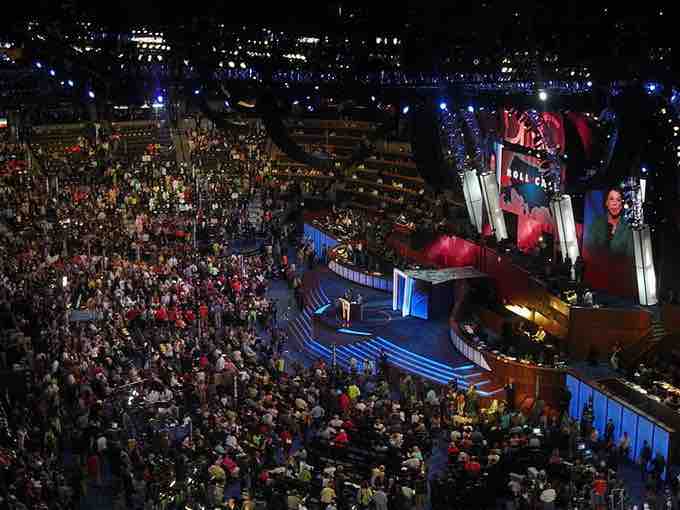Introduction
Party identification refers to the political party with which an individual identifies. Party identification is typically determined by the political party that an individual most commonly supports (by voting or other means). In the United States, political parties consist of three parts: the party as government (members of the party who hold public office), the party as organization (committees, leaders and activists who work to promote the party and the candidates), and the party as electorate (citizens who support the party through party identification).
Citizens in the general population who identify with a particular party make up the Party in the Electorate. Party identifiers (partisans) could be described by their support in the following ways:
- They register as a member of the particular party when registered to vote.
- They show a strong tendency to vote for candidates in their preferred party in most elections.
- When surveyed, they identify themselves as members of that particular party.
- They are inclined to support policies endorsed by the particular party.
- They volunteer for campaigns to support party candidates more than the general population.
- They have a higher voter turnout in primary elections than the general population.
Some researchers view party identification as "a form of social identity", in the same way that a person identifies with a religious or ethnic group. This identity develops early in a person's life mainly through family and social influences. This description would make party identification a stable perspective, which develops as a consequence of personal, family, social and environmental factors. Other researchers consider party identification to be more flexible and more of a conscious choice. They see it as a position and a choice based on the continued assessment of the political, economic and social environment. Party identification can increase or even shift by motivating events or conditions in the country.
Characterization
Party Identification is characterized in three ways. Some view party attachment as a form of social identity, which is similar to a religious or ethnic identity. Moreover, childhood influence is one of main driving factors behind formation of party identification. During childhood, the main political influence comes from parents, other close family members and close surroundings such as the immediate community. Children remember events that happened during their childhood and associate them with the political party, whether or not they were connected with those events. For example, a child growing up in the 1970s would associate the Republican party with the Watergate scandal of the Nixon administration, a child growing up in the 1990s would associate the Democratic party with the sex scandal of the Clinton administration, or a child growing up in early 2000 would associate the Republican party with the Iraq War and the War on Terror. Although these parties might or might not embrace the issues that happened during that administration, a child could forever associate the party with those memorable events. Political Scientists have developed many theories to childhood influence on political party identification. David O. Sears developed a theory stating that major childhood events will influence a child at a young age and make a permanent impression.
Voting
Those people who identify with a party tend to vote for their party's candidate for various offices in high percentages. Those who consider themselves to be strong partisans, strong Democrats and strong Republicans respectively, tend to be the most faithful in voting for their party's nominee for office. In the case of voting for president, since the 1970s, party identification on voting behavior has been increasing significantly. By the late 1990s, party identification on voting behavior was at the highest level of any election since the 1950s. When voting in congressional elections, the trend is similar. Strong party identifiers voted overwhelmingly for their party's nominee in the general election. It is important to note that each party respectively in certain elections, would have stronger voting behavior of their strongest party identifiers. For instance, in the years the Democrats dominated House and Senate elections in the 1970s and 1980s, it can be explained that their strong party identifiers were more loyal in voting for their party's nominee for Congress than the Republicans were.
The same level of voting behavior can also be applied to state and local levels. While straight ticket voting has declined among the general voting population, it is still prevalent in those who are strong Republicans and strong Democrats. According to Paul Allen Beck and colleagues, "the stronger an individual's party identification was, the more likely he or she was to vote a straight ticket. "

Roll Call DNC
Those people who identify with a party tend to vote for their party's candidate for various offices in high percentages. Those who consider themselves to be strong partisans, strong Democrats and strong Republicans respectively, tend to be the most faithful in voting for their party's nominee for office.